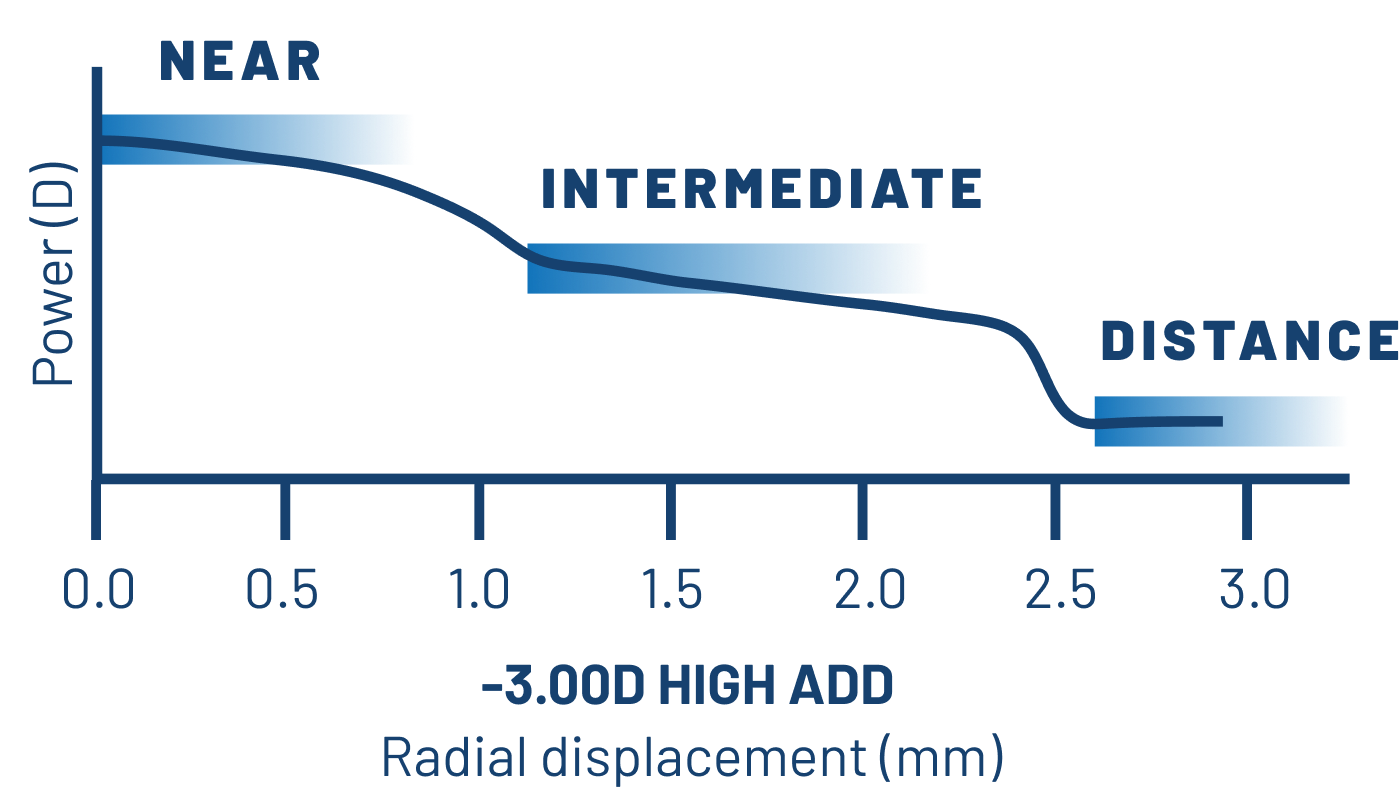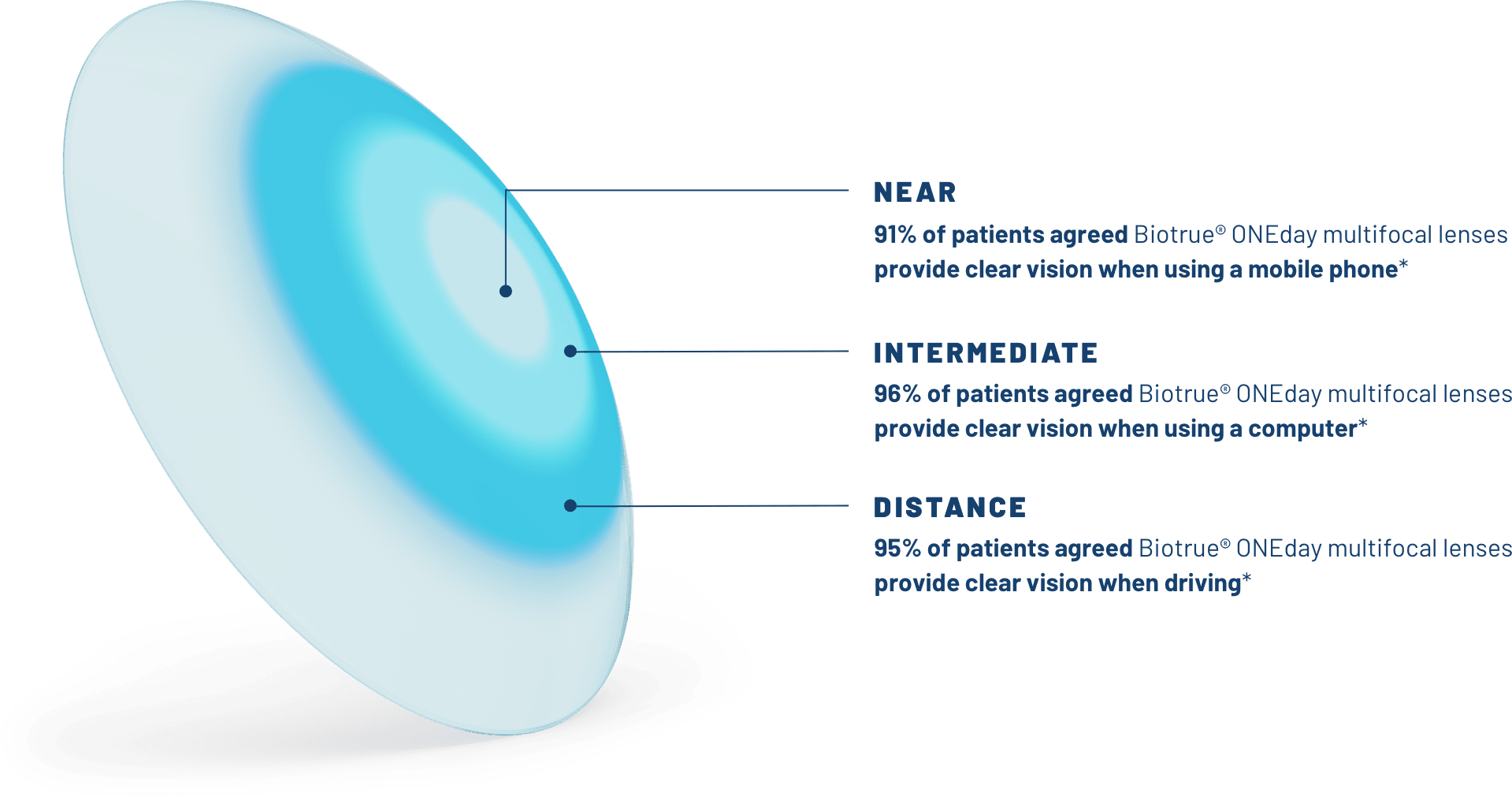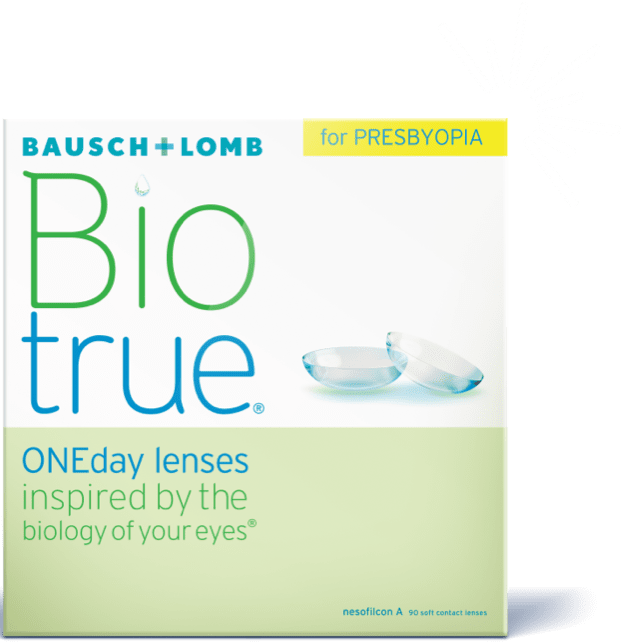Biotrue® ONEday for Presbyopia is powered by proven 3-Zone Progressive™ Design
Our unique multifocal lens design is optimized for 7 biometrics, including pupil size, across 9 critical distances to deliver clear near and intermediate vision, while continuing to provide excellent distance vision1,2:


7 Biometric factors
Watch the sciencePupil size
Anterior chamber depth
Higher-order aberrations
Axial length
Corneal topography/diameter (curvature)
Residual accommodation (across 9 distances)
Subjective refraction
Just 2 ADD powers across the entire power range for an easy, predictable fit:


MULTIFOCAL CONTACT LENS
TECHNOLOGY
Learn more about the technology that powers all
Bausch + Lomb multifocal contact lenses.
EXPLORE BIOTRUE® ONEDAY FOR
PRESBYOPIA EVEN MORE
See which key biometrics influenced the
distinct lens design.
Seamless transitions between the 3 zones provide easy adaptation between key distances


*Results of an online survey with patients who participated in a trial experience program with Biotrue® ONEday for Presbyopia contact lenses and wore their trial lenses for 4 or more days (n=261). Survey questions were top 3-box scores (%Strongly Agree, Agree, Slightly Agree) on a 6-point agreement scale, with a margin of error +/- 3.4%.
Biotrue® ONEday multifocal contact lens parameters
(including plano)
(spectacle ADD)
High: +1.75D to +2.50D
(spectacle ADD)


†WARNING: UV-absorbing contact lenses are NOT substitutes for protective UV-absorbing eyewear such as UV-absorbing goggles or sunglasses because they do not completely cover the eye and surrounding area. The effectiveness of wearing UV-absorbing contact lenses in preventing or reducing the incidence of ocular disorders associated with exposure to UV-light has not been established at this time. You should continue to use UV-absorbing eyewear as directed. NOTE: Long-term exposure to UV radiation is one of the risk factors associated with cataracts. Exposure is based on a number of factors such as environmental conditions (altitude, geography, cloud cover) and personal factors (extent and nature of outdoor activities). UV-blocking contact lenses help provide protection against harmful UV radiation. However, clinical studies have not been done to demonstrate that wearing UV-blocking contact lenses reduces the risk of developing cataracts or other eye disorders.
‡Terms and conditions apply. See Bausch + Lomb return policy for full details.
Also available in:

Biotrue® ONEday for Astigmatism
Evolved lens design that delivers comfort and stability.
 Explore now
Explore now RECYCLE WITH BAUSCH + LOMB
See how the ONE by ONE Recycling Program
works and become a recycling center.
REFERENCES: 1. Data on file. Bausch & Lomb Incorporated. Rochester, NY. 2. Kingston AC, Cox IG. Predicting through-focus visual acuity with the eye's natural aberrations. Optom Vis Sci. 2013;90(10):1111-1118.




